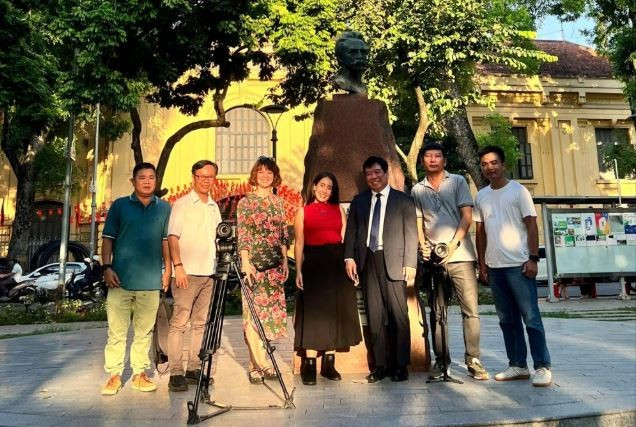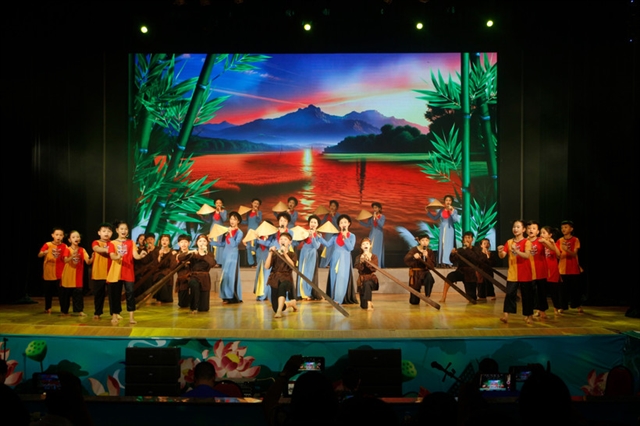 Life & Style
Life & Style


|
| Nghệ An students confidently perform ví and giặm folk songs on stage.VNA/VNS Photo |
NGHỆ AN —The melodies of ví and giặm folk songs continue to echo through classrooms and clubs across the central province of Nghệ An, making the cultural current flow strong and clear into the future.
These ancient folk songs, inscribed in the Representative List of the Intangible Cultural Heritage of Humanity by UNESCO in 2014, represent far more than simple melodies. They are the breath and soul of this land and its people. Yet today, these precious musical traditions stand at a crossroads, threatened by the rapid pace of modern life.
Over the past four years, Nghệ An has operated classes teaching ví and giặm folk songs to talented students at primary and secondary schools. The current 36 students from 130 communes and wards across the province were chosen for their genuine passion and natural aptitude for folk music.
With dedicated guidance from artists and experienced educators, the kids have better insights into a rich repertoire of traditional and adapted folk styles, from ví phường vải Trường Lưu, ví đò đưa sông Lam, and giặm vè to newly-composed melodies like hát khuyên, hát tứ hoa, and xẩm thập ân.
Musician Trần Quốc Trung, director of the province’s traditional art centre, said that it is incredible to see the children mastering such emotionally and technically complicated works in a short time, stating their stellar performances are not only a testament to their talent but also a sign of a bright future for traditional art.
The preservation of ví and giặm extends beyond mere archival work to active promotion in contemporary life. Within communities, dedicated artisans have passed on the folk songs to younger generations.
People’s Artisan Võ Thị Hồng Vân, head of the Ngọc Sơn Ví – Giặm folk singing club in Xuân Lâm Commune, has run classes for children of all ages, from ten-year-olds to teenagers, who can skilfully sing many melodies after 10–15 lessons thanks to their love for folk music and fondness for learning. Vân has also collected original melodies, studied traditional instruments, and staged performances for the participants.
Schools across Nghệ An have also incorporated folk singing into extracurricular activities, while local singing clubs hold regular rehearsals, performances, and exchange events to keep the art alive. Besides, the province has organised multiple festivals and competitions, creating a venue for clubs and art troupes to share experience.
Meanwhile, the province’s traditional art centre has adopted multiple solutions to preserve the traditional art, with researchers and collectors documenting melodies and lyrics in written form while digitalising the art through audio and video recordings. It is also capitalising on social networks to further popularise ví and giặm among the public, especially the young, head of its research and collection division Tạ Dương said.
Deputy Director of the provincial Department of Culture, Sports and Tourism Quách Thị Cường noted that the sector is working out a specific roadmap to develop ví and giặm folk songs into a tourism product to spread the value of this unique heritage. — VNA/VNS